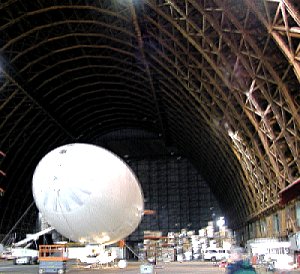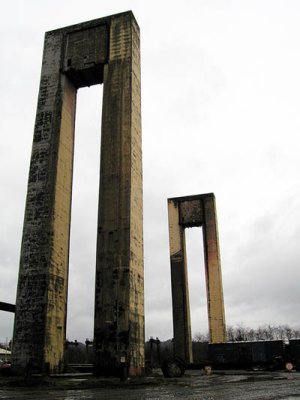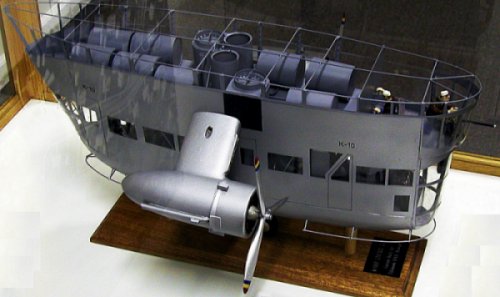Blimp
Today, blimps and houses made to hold them. The University of Houston's College of Engineering presents this series about the machines that make our civilization run, and the people whose ingenuity created them.
We're in an air museum and find ourselves staring at a tall tub-like structure -- like a narrow house with a rounded bottom. It's the gondola that once hung below a large helium-filled blimp -- like the Goodyear blimps at football games. Without the inflatable gas bag above it, the gondola is puzzling. But its presence here reminds of the enormous importance blimps had in WW-II.
We suffered terrible losses of ships to German submarines in 1942 -- 454 ships and 5000 sailors. We had to find those U-boats. Slow-moving rigid dirigibles, then familiar, seemed ideal for finding enemy subs; but they were expensive, few, and not too robust. The inflatable blimp was cheaper and simpler than the old dirigibles.
Now I find two articles about blimps in the magazine Invention and Technology. We'd experimen ted with them between wars and had a fleet of eight at Lakehurst, NJ. Then Roosevelt authorized 48 more -- still far too few for our huge coastline. So we eventually made two hundred of them.
ted with them between wars and had a fleet of eight at Lakehurst, NJ. Then Roosevelt authorized 48 more -- still far too few for our huge coastline. So we eventually made two hundred of them.
They were typically 250 feet long, flew around 60 miles an hour, and could stay aloft for fifty hours. They were fine stable viewing platforms. They did carry depth charges and a machine gun, but their real purpose was locating and reporting submarines. And they were very effective. In 1943, the loss of ships was reduced by 86 percent. Only eight were lost in 1944. Blimps also did a great deal of rescue work at sea.
They've now been replaced by electronic surveillance and by helicopters. But they were too good, too beautiful, to abandon. So they remain for advertising and specialized aerial survey tasks.
 But the magazine has two articles and one is about the hangars for those great whales. There was a severe wartime shortage of steel, so a new wood construction technology had to be invented. To house eight blimps, the hangars had to be a thousand feet long, maybe 250 feet wide and 120 feet high. Engineers built thick wooden trusses into inverted catenary curves. These structural elements then repeated over the length of the hangar. At one end, huge concrete towers anchored the portals to this amazing space.
But the magazine has two articles and one is about the hangars for those great whales. There was a severe wartime shortage of steel, so a new wood construction technology had to be invented. To house eight blimps, the hangars had to be a thousand feet long, maybe 250 feet wide and 120 feet high. Engineers built thick wooden trusses into inverted catenary curves. These structural elements then repeated over the length of the hangar. At one end, huge concrete towers anchored the portals to this amazing space.
Though some survive, many have now perished in fires. I like to visit the two in Tillamook, Oregon: One serves as a fine air museum. The two-and-a-half million board feet of Douglas fir in the other one burned in 1992. When we visit the site today, the first things we see are the concrete towers of the burned hangar. They look like an ancient Alexandrian lighthouse and its twin.
So we enter the surviving hangar. And who can walk the room that once housed these floating giants without the same awe of vast interior space that touches us in a Gothic cathedral? Quiet shrouds the old hangers. Their vastness eats up all noise and leaves us in the presence of our own breath and of our own thoughts.
I'm John Lienhard, at the University of Houston, where we're interested in the way inventive minds work.
N. Nirgiotis, Blimps at War. pp. 12-18 and C. W. Ebeling, The Blimp Barns. pp. 20-25. Both articles in Invention & Technology, Summer 2006.
See also the Tillamook Air Museum home page,
http://www.tillamookair.com/

Model of the gondola for the K-10 blimp. A full-size gondola may be seen, among other places, at the New England Air Museum. (All images from the Tillamook Air Museum, photos by JHL)